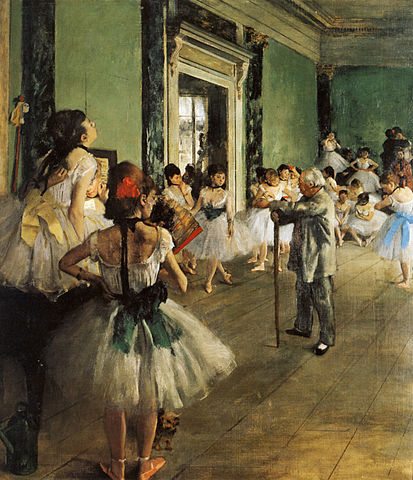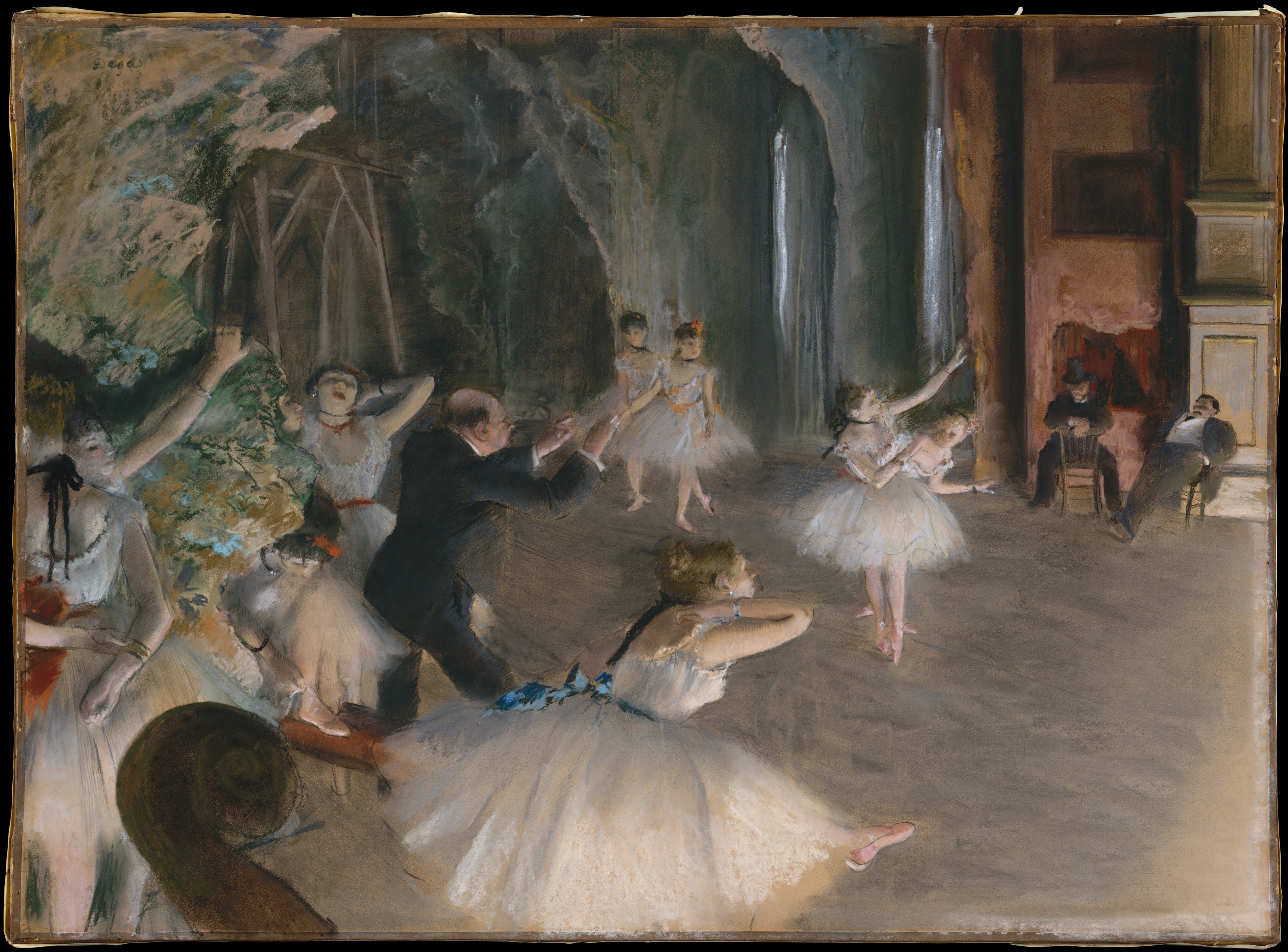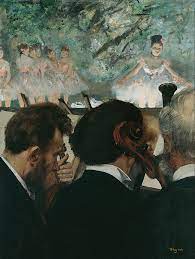Degas's Dance Paintings and Horrible Secrets They Conceal
Hilaire-Germain-Edgar Degas is an actual household name. He’s known for his controversial Impressionist paintings of ballet dancers. The swirling tutus in soft colors and the pink strokes on the cheeks of each dancer evoke a feeling of voyeurism as if the viewer were sitting inside the auditoriums shown.
The truth is that behind the youthful innocence and glitz of these paintings, there's a darker story. Explore the terrifying story behind the famous Degas ballet paintings with Artsper.
A brief history

Edgar Degas, The Dance Class, 1874
Edgar Degas' ballet paintings should be viewed in relation to the French social environment when they were painted. Imagine the 1870s, Paris's Belle Epoque. After the Franco-Prussian War, it was a period of peace and economic growth. As fashion, culture, and art were associated with Paris, shopping centers were popping up all over the city.
Dancers are getting ready to perform at the Palais Garnier in Paris, which was recently completed. The Impressionist movement is in full force. In 1874, the first exhibition taken officially by the Impressionists, including Claude Monet and Camille Pissarro, as well as Pierre-Auguste Renoir Paul Cezanne Edgar Degas, took place in Paris.
There was also room for enjoyment with all the great advances. As evidenced by many Impressionist works, the wealthier Parisians could get inspired by cultural shows such as opera and ballet more often. These paintings could tell two different stories if you pay attention: one about opulence and the other about optics. Edgar Degas's ballet paintings suggest that ballerinas work as sex workers, and the audience is their patrons.
Degas' ballet paintings include images of the rehearsal rooms.

Edgar Degas, The Rehearsal Of The Ballet Onstage, 1874
The Rehearsal for the Ballet Onstage, 1874, shows dancers practicing before a performance, with the choreographer directing them in the middle. Two men are seated to the right of the stage, watching the practice. As they lean back in their comfortable positions, the power of these men is evident.
In the 1870s, ballet was losing popularity, and many lower-class dancers turned to other ways to earn money. Families of dancers were often encouraged to engage in a sex act as a way out of the hard times they faced during World War II. Sex work and ballet were a way to achieve financial freedom. The Rehearsal of the Ballet Onstage shows patrons watching the girls perform and then going with them into one of the backrooms used to practice dance.
The star

Edgar Degas, Ballet, 1876
Ballet (1876) became the image of the dark side in Degas' ballet paintings. Ballet is often called The Star because it is similar to another work of the same name. It features a single ballerina. In the foreground, a young ballerina in a white tutu with flowers is seen. Some believe the girl is the Spanish dancer Rosita Mauri. However, her identity has not been confirmed. The set, curtain, and other dancers are all outlined in a riot of color. A distinct figure in a black suit breaks up the color. The figure is intimidating and ominous, even with his face hidden.
Rumor has it that young ballerinas with the longest backstage relationships were given the best roles for their performances on stage. Images like Ballet are portrayed in a more negative light.
Subtle stories in Degas ballet paintings

Edgar Degas, Orchestra Musicians, 1872
Degas' ballet paintings are a testament to the power of the atmosphere. The young dancers in Orchestra Musicians are viewed from the pulpit's perspective. The principal ballerina bows as the other dancers mingle behind her. While playing their instruments, older musicians seem transfixed by the stage. Degas's paintings are full of voyeurism.
In Orchestra Musicians, he brings men to the fore. The Palais Garnier wasn't built for women. It was designed for men. Many back practice rooms were built with patrons' comfort in mind. The young dancers are viewed as an extension of the show.
This image, which does not show the men themselves, shows a stark contrast between the older and young dancers. The dancers were often called "les petits rats" or little rats. Many were not older than 14. Images from Belle Epoque show children in bright light, but, likely, their lives were not easy.
Warning
Degas' ballet paintings are beautiful, but they also serve as a gentle reminder to always look behind the curtain. Dance artworks are a relic of Belle Epoque and will be forever revered for their beauty and melancholy. Artsper will help you unravel the mysteries of art.
No Comments Yet...